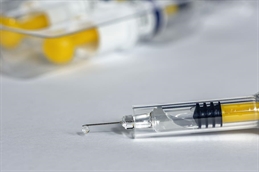
As the world awaits the approval of COVID-19 vaccines, the worldwide freight industry is gearing up for an initial 2021 goal of transporting an average of 271 million ultracold and cold doses per month (9 million doses per day).
Early modeling by global tech market advisory firm, ABI Research said there will be at least 857 temperature-controlled trucks leaving Pfizer and Moderna manufacturing facilities or distribution centers each month.
In a statement, ABI Research said should AstraZeneca also receive approval, these numbers will be materially increased.
Distribution and delivery will continue to grow and get more complicated after the large urban and suburban areas are covered, it added.
“For success in 2021, especially after a very challenging 2020, one must understand fundamental trends early ... now is the time to double down on the right technology investment,” said Stuart Carlaw, Chief Research Officer at ABI Research.
Vaccine Freezer Frenzy in 2021
“Early vaccine candidates require ultra-low temperatures, as much as -70 degrees Celsius ©, or -94 Fahrenheit. This is impacted by a lack of adequate storage capacity for these new types of Messenger RNA (mRNA) vaccines. The containers to store and transport them are not widely available and not required for common vaccines," said Susan Beardslee, Freight Transportation, and Logistics principal analyst at ABI Research.
She noted that constant temperature control is also needed from the manufacturing site to the inoculation sites.
"According to known criteria, people will require two vaccines from the same manufacturer within 21-28 days. That equates to at least 662 million doses in the United States and approximately 1.5 billion across the European Union,” Beardslee added.
Much of the focus, to date, has been on fulfillment centers and modal capacity for air.
She noted, however, another concern is the need to seamlessly track temperatures and provide alerts for any out-of-spec loads. This involves integrated software, sufficient compute and sensor capabilities throughout, and the cooperation of both public and private entities across multiple modes and likely competitors.
No Global Supply Chain Return to the “Before Times”
Meanwhile, Bearslee said “although goods transportation has seen a promising rebound from the spring, pinch points continue, from driver shortages (back to 2018 levels) to container shortages and carrier bankruptcies due to increasing insurance costs and lower profits."
She said further digitization and integration of systems will provide greater visibility, flexibility, and ROI to supply chain participants that can improve economic performance, but likely after 2021 on a broader scale.



